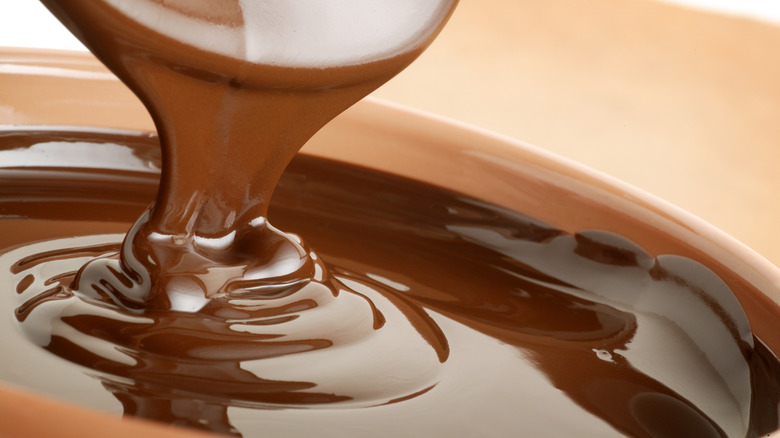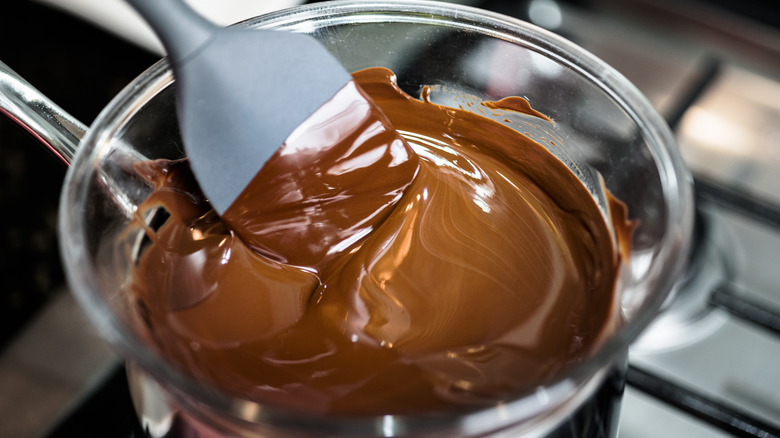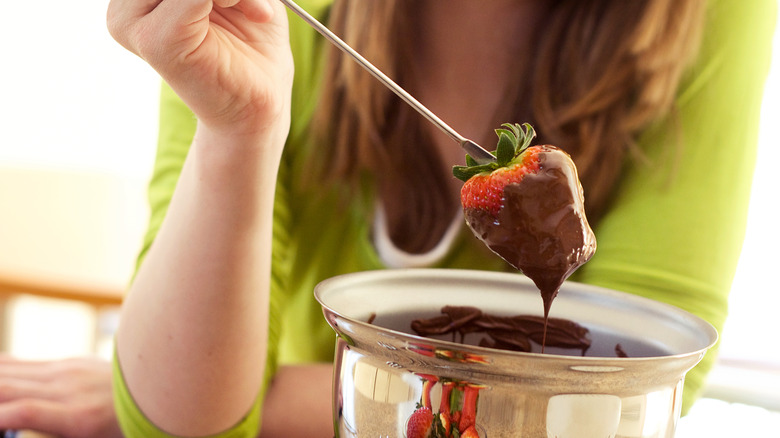This Kitchen Tool Mistake Will Totally Ruin Melted Chocolate
Melted chocolate is an undoubted crowd-pleaser, whether you love it drizzled on popcorn, used to enrobe decadent truffles, or served as a silky fondue. That said, chocolate is notoriously fussy about how it converts to liquid form, and anyone who has had it seize up on them may feel apprehensive about taking another shot.
In lay terms, chocolate that has seized is a gloopy, sticky, lumpy, or clumpy mess, thanks to the coagulation of cocoa particles. This highly unpleasant phenomenon can be traced to two main causes. One is overheating your chocolate, which causes the cocoa particles to clump together — hence the need for low heat and double boiler setups.
The second is due to the introduction of moisture, be it drops of water or a waft of steam. Fortunately, there's a tip that can keep you from making a critical error on that front, and it couldn't be simpler. When you're gearing up to melt some chocolate, just take a little extra time to be sure your tools are completely dry. This simple strategy will address one of the causes of chocolate seizing and save you from future cocoa catastrophes.
Why moisture matters to melting
Chocolate seizes when it's exposed to moisture because water melts the sugar, effectively turning it into syrup. When this happens, it leaves behind cocoa particles that will cling together, creating clumps and preventing the smooth texture you're aiming for when melting chocolate.
By thoroughly (even fanatically) drying every piece of equipment that will come into contact with your chocolate, you can easily avoid this messy and maddening pitfall. Since there are multiple methods for melting chocolate, that can mean everything from your bowls and rubber spatulas to a slow cooker insert.
Remember that vapor counts as moisture too, so if you're planning to try the method in which you submerge a plastic bag in hot water, take the time to double-bag it just to be extra sure. By preventing your project's exposure to liquid in any form, you'll have a much higher chance of your chocolate becoming a deliciously silky finished product.
How to prevent melted chocolate from seizing
Seizing can sometimes happen despite your best efforts, and while that means your chocolate may not be suitable for your planned dish, there are ways to salvage or repurpose it. Some suggestions are to mix in boiling water a little at a time (about a teaspoon to start) and do your best to whip it into creamy submission. Remember that what comes of this method will be more of a liquid product (like an easy chocolate sauce), as it will be more watered down and won't fully firm up.
Alternatively, adding fat, like vegetable shortening, butter, cream, or oil, can recover your chocolate's creaminess. And while you still won't get that snappy or hardened chocolate you might have had in mind, you can convert it to a luscious easy chocolate fondue, frosting, or rich chocolate ganache topping — and those are not such bad consolation prizes. You can always keep these backup plans in your back pocket, but for the best chance of success at a melted chocolate masterpiece, don't forget that super-dry tools and total moisture prevention are an absolute must.


